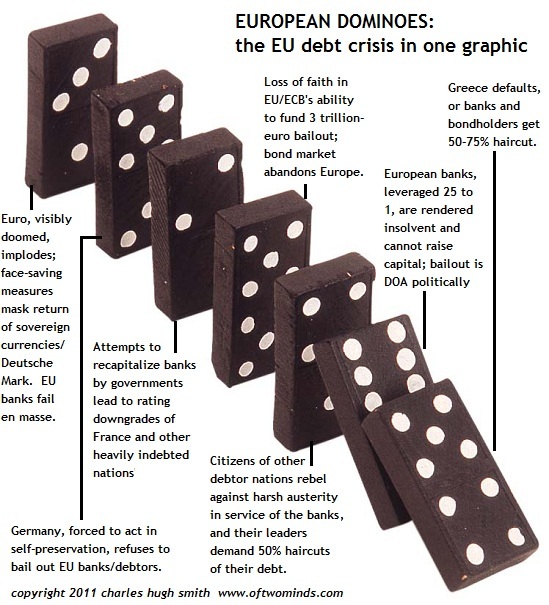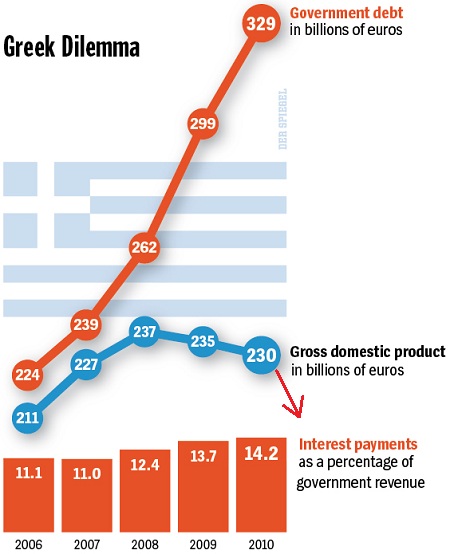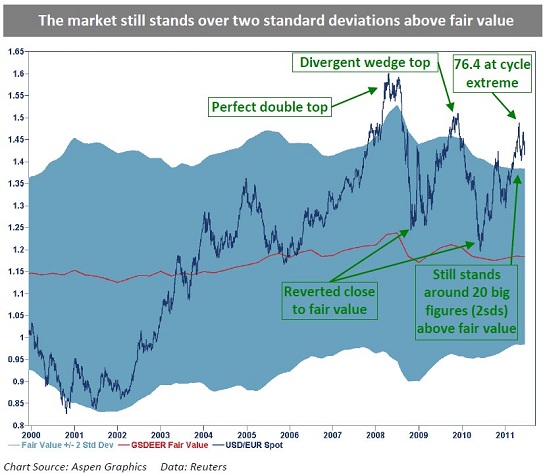Mon Oct 24, 2011 8:10am EDT
(Reuters) - The China hard-landing debate is a classic tail risk story -- an unlikely scenario, but if it materializes the consequences could be catastrophic. Because of their close trade links, Malaysia, Singapore,
South Korea, Taiwan and Hong Kong would be among the first to feel the pain should China's growth weaken dramatically.
However, it would probably take a shock even bigger than what followed the 2008 Lehman Brothers bankruptcy to spread significant damage beyond Asia.
Judging from the latest HSBC survey of China's manufacturing sector, released on Monday, there is no evidence that growth is collapsing in the world's second biggest economy.
Indeed, not one of the 30 economists polled by Reuters last week predicted China's 2012 growth rate would dip below 8 percent.
But that has not silenced speculation that China is heading for an economic disaster. Some economists have tried to calculate the potential fallout just in case their forecasts prove to be overly optimistic.
Bank of America-Merrill Lynch economists estimated that if China's real per capita gross domestic product fell by 2 percentage points, the pain would remain contained within Asia.
"It would take a severe shock to China for the negative spillovers to be transmitted beyond Asia," they wrote in a note last week to clients.
A 4 percentage point drop would be enough to spread to parts of Europe and the Middle East, with growth suffering in countries including
Russia, Kuwait and Finland. Annual global growth would probably drop by 0.5 percentage points.
The last time China's economy recorded a decline anywhere close to that magnitude was after the Lehman bankruptcy. Year-over-year growth dropped to 6.8 percent in the fourth quarter of 2008, down from 9.0 percent in the prior three-month period.
A full-blown crash, which BofA-Merrill described as a 6 percentage point drop in China's real per capita GDP, would harm Europe's biggest economies -- Germany,
France and Britain -- and even nick U.S. growth. It would probably shave 0.8 percentage points off global growth.
That would be a significant hit considering the International Monetary Fund thinks world output will be up a relatively modest 4 percent in 2012.
DOOMSDAY SCENARIO
BofA-Merrill considers the risk of a China crash negligible -- a 0.13 percent probability event.
But the China bears are growing louder in their warnings of an impending doom. China simply cannot rely on fixed-asset investment to drive 8-percent-plus growth forever, they argue.
Heavily indebted local governments could default. A property market crash may drive hundreds or even thousands of developers out of business. Bad loans may pile up on banks' books, and China could face an all-out credit crisis.
"China is undoubtedly a severely imbalanced economy, suffering from credit-fueled investment and housing excesses that could easily spin out of control and crash, just like all the other 'highly regarded' economic bubbles before it," Societe Generale strategist and well-known bear Albert Edwards wrote in an October 20 research note.
Jim Walker, founder of Hong Kong-based consultancy Asianomics, said it would be a "miracle" if China's 2012 GDP slows to just 7 percent.
"We're really looking for something much, much worse than that," he said. "China will be lucky to get away with 5 percent."
That would be a drop of more than 4 percentage points from 2011's expected growth. Not only would China's regional trade partners take a hit, but so would commodity exporters such as
Australia and Indonesia. China accounted for 65 percent of the world's iron ore imports in 2009, and 15 percent of coal imports, according to IMF data.
LOOK ON THE BRIGHT SIDE
A China slowdown would bring some benefits for Asia, albeit small ones. Lower prices would bring welcome inflation relief for Asia's commodity importers, said Johanna Chua, chief Asia-Pacific economist for Citi in Hong Kong.
It might also swing a little bit more foreign investment toward other Southeast Asian economies that have struggled to compete with China for overseas funds.
China itself invested only about $2.4 billion last year into the 10 countries that make up the Association of South East Asian Nations, according to Bofa-Merrill economist Chua Hak Bin in Singapore, too little to pose a systemic threat on its own.
There is considerably more money flowing the other way. Since 1995, ASEAN has invested about $75 billion in China, with Singapore far and away the most exposed, accounting for $62 billion of that. A China hard landing could cause "significant" portfolio losses, BofA-Merrill's Chua said.
But it also looks clear that Beijing will act if growth looks likely to weaken dramatically. It has room to ramp up government spending, ease credit conditions, and slow the appreciation of the yuan currency to give exports a boost.
"If China is hard landing, I agree with the bulls on one thing: expect the authorities to become aggressively stimulative," SocGen's Edwards said
.









